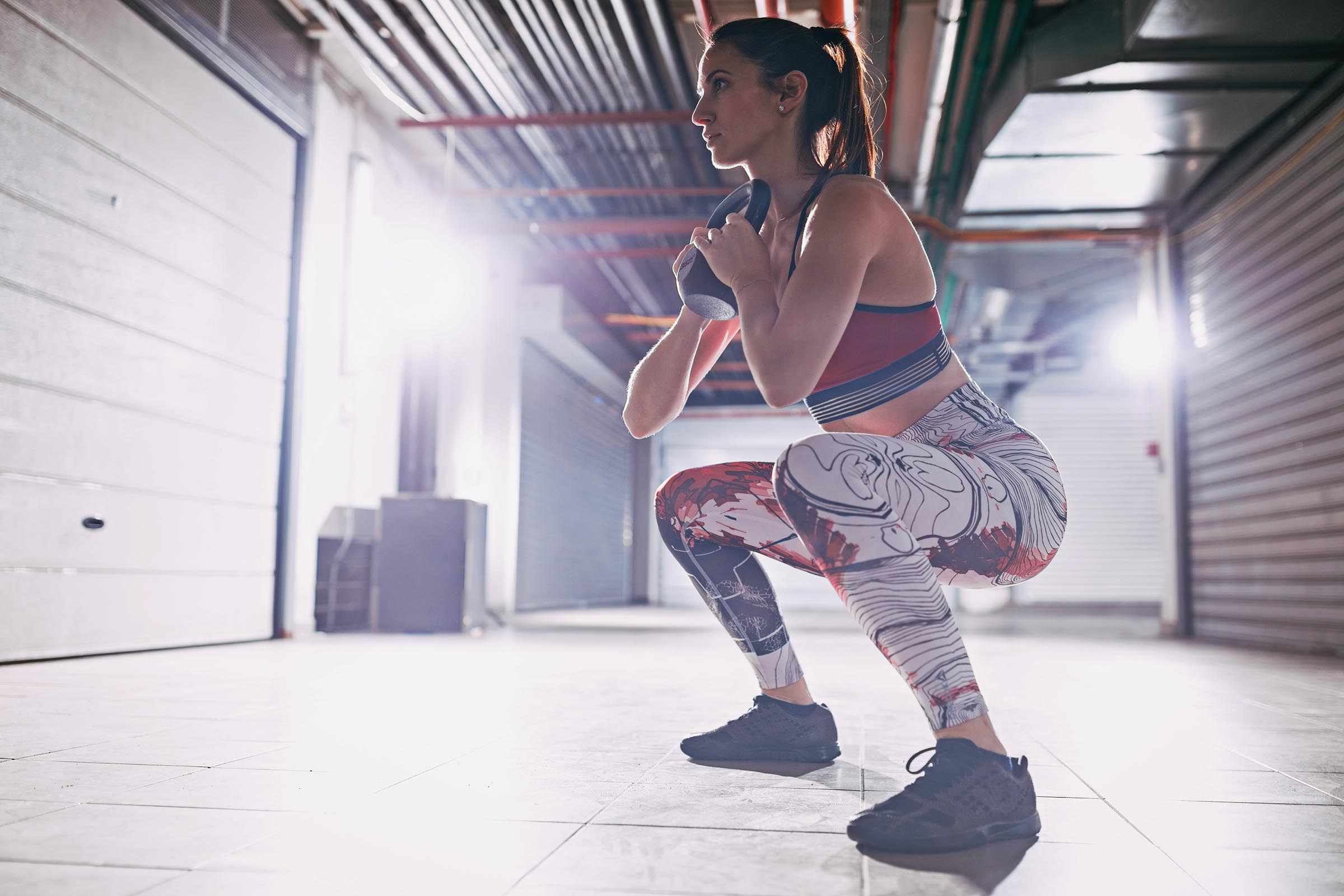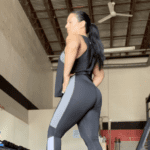3 Front Squat Alternatives for Shredded Quads & Sculpted Abs

Sari Terranova is a total supermom, CPT, and nutrition coach who introduces women and youth athletes to the power of weightlifting, bodybuilding, powerlifting, and functional strength training. She understands that not every move is for every person, so she’s come up with some killer front squat alternatives that’ll still get you the gains you want.

Sometimes No Pain Actually Equals More Gains
Some people will tell you that there’s certain exercises you simply must do. This is rarely a valid piece of advice. Our bodies are all constructed with such unique proportions that these sweeping declarations can actually be dangerous.
The front squat is one of those movements that may elicit a sneer of disgust from a judgy coach when they discover that it’s not part of your regular programming. However, if you lack mobility in your upper back and wrists, the front rack position can be uncomfortable or painful, even if you use straps or a cross grip.
Luckily, modifications can be made to almost any movement that allow you to build strength safely. Alternatives can help correct imbalances, increase mobility, and expand your repertoire of safe and effective movements.
If you’re front-rack-challenged (like me), try using these front-squat alternatives for safe and pain-free leg day gains.
Front Squat vs. Back Squat
So, what’s all the hype about the front squat, anyways? Very similar muscle activation happens in most squat variations (quads, glutes, hammies, calves, core), but evidence shows that the front squat may have an edge on back squats for quadricep firing (in contrast to slightly more glute action on the back squat).
Because the weight is loaded anteriorly (on the front of your body), the front squat requires a more upright posture to avoid face-planting in the middle of the gym, resulting in slightly less hip extension.
This front squat also reduces stress on the lumbar region, which makes it a good alternative on your lower body days if back squats hurt your lower back.
Additionally, maintaining an upright torso when doing a front squat requires increased core recruitment, making it a bodybuilder’s go-to variation for teardrop quads and ripped abs.
Change the Way You Train
3 Best Front Squat Alternatives
1. Kettlebell Goblet Squats
Goblet squats are great for front squat novices. They’re simple to perform, require minimal equipment (you can sub a dumbbell held vertically if you don’t have a KB), and you can do them almost anywhere.
Stand with your feet slightly wider than shoulder-width apart. Dig your feet into the ground to find your regular squatting stance (which is a little different for everyone), grip the sides of the handle or the ball of the kettlebell, holding it close to your chest.
Inhale and brace your core. Keep your elbows close to your body, engage your lats, and keep your chest upright as you squat down until your elbows reach just inside your knees.
Push your feet into the floor and rise to starting position.
Coach’s Tip: You can also perform double-kettlebell front squats by holding two KBs on the fronts of your shoulders. The bells lay almost horizontal with the handles touching in front of your chest.
2. Zercher Squats
I’m partial to zercher squats because they allow for increased load due to the use of the barbell and rack position. They also absolutely torch your abs due to the unique position of the load. Zerchers also increase bicep and upper back recruitment that you won’t find in many squat variations.
Place the bar on the rack so it sits just under elbow height when you are standing in front of it. I recommend starting with just the bar to get the form down, and then add weight accordingly.
To unrack the bar, scoop it into the crook of your elbows, stand tall, and back away from the rack. (I like to press my palms together in a prayer position; others like to keep them face up.) With your feet in your standard squat position, take a breath to brace your core and squat down, keeping your elbows close to your body and your chest proud. Lower until your elbows are just inside your knees and then push your feet through the floor to rise back to the starting position.
3. Weighted Spanish Squats
Spanish squats are my go-to burnout exercise (alternating with walking lunges) to finish off a brutal quad-focused leg day. Adding anterior weight and varying tempo makes them even more effective as a full-body metcon finisher.
Grab a heavy, long-loop resistance band and wrap it around a rack or other sturdy pole at knee height. Step into the loops so the band is in the bend of your knee. Step backward to create enough tension that you can squat back and down with solid depth. Once you have the tension and the form down, grab a kettlebell or a plate and hold it goblet-style as you squat into oblivion.
Want Training Tips, Exercise Guides & Knowledge Bombs Sent to Your Inbox?
Sign up for the FitNerd newsletter from TrainHeroic
Related articles
3 Ways to Improve Mobility Without Stretching
Are you still trying the endless foam rolling and stretching exercises to get that deep squat position? We know how important mobility is for great, or even GOOD performance. All professional athletes have some comfortability in end ranges of motion. So, what else do...
The Ultimate Guide to Lunges: Queen of all Glute Exercises
Your glutes are the largest muscle group in your body. They’re responsible for almost everything your legs do—walking, running, jumping, squatting, lunging, and just standing upright. As far as moving through space goes, strong glutes are the bedrock of overall...
A Beginner’s Guide to Steel Mace Training
Author: Jesse Grund
Mace training will make you a better mover without it’s not confining you to a fixed space or predetermined range of motion. Second, it’s an offset load with 80 to 90 percent of the weight in the head. You’re also constantly having to resist rotation, which creates greater core engagement.

Join the community
Sign up for the latest training news and updates from TrainHeroic

About TrainHeroic
Support
Made with love, sweat, protein isolate and hard work in Denver, CO
© 2022 TrainHeroic, Inc. All rights reserved.






